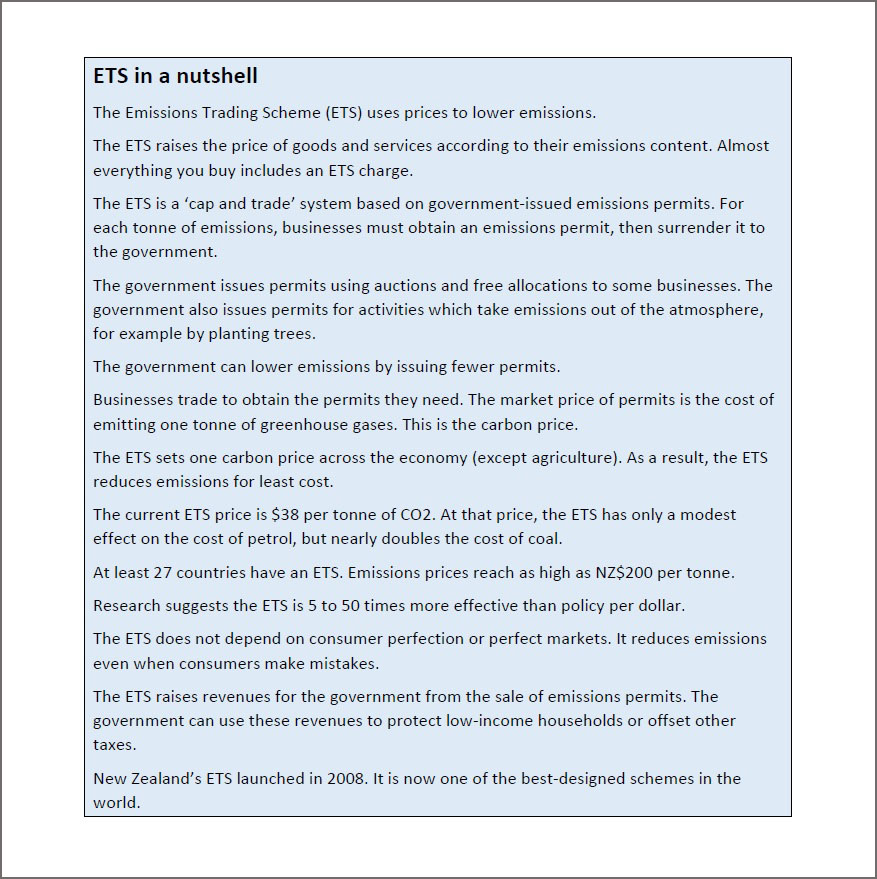The Emissions Trading Scheme (ETS) uses prices to lower emissions. The scheme launched in New Zealand in 2008 and it is now one of the best-designed schemes in the world.
But there are still a lot of misconceptions about how the ETS works.
In this paper, Senior Economist Matt Burgess answers some frequently asked questions with engaging and easy-to-understand content. The four main areas covered are:
- A defence of the Emissions Trading Scheme (ETS)
- An overview (and a simple example) of the ETS
- Evidence for the effectiveness of the ETS
- Objections to the ETS
Additional information
To further complement key points in the paper, Matt has also recorded short audio clips listed below.
ETS FAQ #1: Explaining what 'consumer mistakes' mean (refer to pg. 4)
ETS FAQ #2: Explaining net vs. gross emissions, ETS targets, and the Paris Agreement (refer to pg. 4)
ETS FAQ #3: Who is in the Emissions Trading Scheme? (refer to pg. 4)
ETS FAQ #4: How come you never see the ETS? (refer to pg. 5)
ETS FAQ #5: Scepticism about doing both policy and the ETS (refer to pg. 6)
ETS FAQ #6: Why customers usually decide how and where emissions fall (refer to pg. 7)
ETS FAQ #7: Changing behaviour to reduce emissions (refer to pg. 7)
ETS FAQ #8: The ETS doesn't know how and where emissions are cut (refer to pg. 10)
ETS FAQ #9: How to buy New Zealand Units (refer to pg. 12)
ETS FAQ #10: How forestry works within the ETS (refer to pg. 12)
ETS FAQ #11: How does NZ's ETS compare with overseas schemes? (refer to pg. 16)
ETS FAQ #12: Explaining the credibility of the ETS (refer to pg. 18)
ETS FAQ #13: Why the ETS will work if people continue to drive petrol and diesel vehicles (refer pg. 18)
ETS FAQ #14: Does policy have an advantage over the ETS? (refer to pg. 20)




